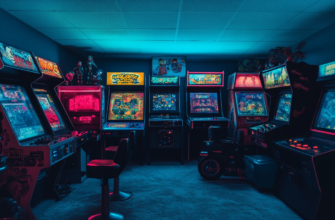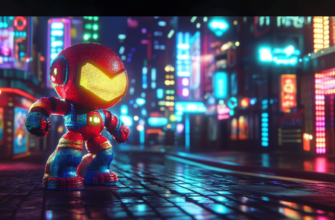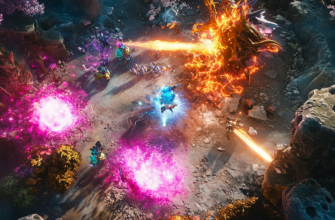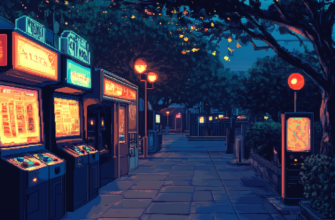- Why modern gamers can’t stop going back to old games
- What’s driving the retro games movement?
- 1. Nostalgia: Reliving past glory
- 2. Simplicity and focus in design
- 3. Stable performance on modern rigs
- 4. Classic mechanics and difficult gameplay
- 5. Art styles that stand the test of time
- 6. The rise of remakes and remasters
- How to get into retro games as a modern gamer
- Step 1: Find a good platform
- Step 2: Get over the graphics hurdle
- Step 3: Explore emulators (carefully)
- Step 4: Go in with no expectations
- Will you join the retro craze?
Why modern gamers can’t stop going back to old games
Hey fellow gamers! Do you sometimes find yourself firing up an old game that’s been sitting in your library for years? If you answered “yes,” you’re not alone. In recent years, a growing number of gamers have been drifting back to the classics—those retro games that defined entire eras of PC gaming. As fun and flashy as today’s modern, high-octane experiences are, many gamers still seek out older titles. It’s not just about nostalgia; it’s about something deeper. In this post, I’ll break down why so many gamers are returning to old games and why you might want to as well.
What’s driving the retro games movement?
First off, let’s dive into the main reasons why gamers are rediscovering these old gems. While it may seem obvious to some of us, there’s actually a multitude of factors at play. Most of the time, people attribute it to nostalgia, but honestly, it’s far more complex than that. Retro games are part of gaming history, offering unique experiences and challenges even modern titles sometimes fail to deliver.
1. Nostalgia: Reliving past glory
Okay, let’s get this one out of the way first: nostalgia. It’s a powerful feeling for gamers who grew up during the golden eras of gaming. Whether you were hooked on early PC games like “DOOM,” “Diablo II,” or even “Baldur’s Gate,” there’s a certain satisfaction in revisiting the games that introduced us to the world of video gaming. For many, firing up an old game transports them back to a time when the excitement of playing was a little purer, and things seemed simpler.
Example: I remember booting up “Quake” one weekend a few years back. From the moment that dark, gritty music started playing, it was like stepping into a time machine. It wasn’t just about gameplay—it was about rekindling the excitement of my early days as a gamer.
2. Simplicity and focus in design
Modern games are fantastic—there’s no denying that. From massive open worlds to hyper-realistic graphics, today’s games often push the boundaries of what’s possible. The problem? Sometimes they overcomplicate things with an overload of features. Retro games, by comparison, often deliver focused experiences without all the fluff. You hop in, you play, and you immediately get to the essence of what makes that game fun to begin with.
If you’re someone who fancies hours of tutorials or skill trees that span across several in-game menus, modern games might be your jam. But if you’re craving that immediate gratification, old games can get you into the action without any unnecessary friction.
3. Stable performance on modern rigs
Let’s be honest: we’ve all been there. You’ve just dropped a small fortune on building a killer gaming rig, and *boom*—the latest AAA game glitches out or kills your frame rates. Retro games usually run incredibly smoothly on modern hardware, even if they weren’t optimized for it back then—thanks, emulators and patches! If you hate dealing with the constant updates, patches, or bugs in modern gaming, older games provide a refreshing contrast. They’re stable, polished, and just as fun as ever, with none of today’s bloat.
- Tip: Consider mods! Many old games have community-developed patches that make them run even better on newer hardware. “Morrowind,” for example, has an amazing modding scene that can enhance the game to 2023 standards.
4. Classic mechanics and difficult gameplay
While some modern games tend to hold your hand or overuse checkpoints, retro games often force you to “git gud” or lose—a lot. The challenge in older games was real and unapologetic. Titles like “Dark Souls” or “Nioh” actually owe a lot of their success to the hardcore difficulty design principle popularized by older platformers and dungeon crawlers. So, if you’re looking for something more brutal that doesn’t feed you wins, old games are where it’s at.
Example: Have you ever tried completing the original “Mega Man”? Literal pain, but in the best possible way! No autosave, no check-points galore—just your skills and patience.
5. Art styles that stand the test of time
Another reason gamers keep returning to retro games is because their art styles, although less technical, can still look pretty timeless. Games like “The Legend of Zelda: Ocarina of Time” or pixel-art masterpieces like “Final Fantasy VI” boast an art direction that’s memorable, graceful, and nostalgic.
A game’s fidelity might age, but a good art direction ensures that it remains just as visually engaging as it was when first released.
6. The rise of remakes and remasters
One more reason old games refuse to die is because they keep being reintroduced to new generations of players through remakes and remasters. Look at “Resident Evil 2.” The developers took an absolute beast of a game from the late ‘90s and transformed it into a modern masterpiece, all while retaining the core experience that made it famous. As today’s gamers get exposed to retro classics in remade form, they often seek out the originals. Some even say the original version offers something the remakes sometimes miss.
- Remember: Remasters breathe new life into legendary old games, giving them a polished look and refined performance, but don’t always expect the exact same experience.
How to get into retro games as a modern gamer
Are you sold on retro gaming yet? Here’s how you can jump in and start exploring older titles. Whether you’re someone who grew up during the 8-bit era or you’re a younger gamer looking to experience the classics, there are plenty of ways to get started.
Step 1: Find a good platform
If you’re a PC gamer, platforms like GOG (Good Old Games) offer a wide range of classic titles, often patched to work smoothly on modern systems. Steam also has some retro gems, although GOG shines when it comes to older DRM-free games. If consoles are more your thing, Nintendo eShop and PlayStation Store offer quite a few older titles for download.
Step 2: Get over the graphics hurdle
One of the initial hurdles for modern gamers venturing into retro territory is graphics. Sure, compared to today’s ultra-realistic titles, some of these older games can look… rough. But remember: graphics don’t make a game fun! Try a few and you’ll quickly ignore the pixels once you’re immersed in the gameplay.
Step 3: Explore emulators (carefully)
If you want to play some seriously old-school stuff that’s out of print, you could explore emulators. There are tons of emulators that allow you to play games from systems like the NES, SNES, Genesis, and more directly on your PC. But keep in mind the legal side: only download or emulate games you own the rights to!
- Tip: Look for community recommendations on the best emulators for performance on your system.
Step 4: Go in with no expectations
Some old games might look janky by today’s standards, but try to play them for what they are: products of their time. Take a breath, approach them with zero expectations, and you’ll often be surprised by the depth some of these titles offer.
Will you join the retro craze?
At the end of the day, gamers keep returning to retro games for the same reason we held onto our old consoles—they offer something special. It might be a blast of nostalgia, the simplicity of gameplay, or just the challenge that comes with classic game design. It’s like rediscovering your roots and realizing that sometimes, the old ways were just as fun as the latest and greatest. If you haven’t given classic PC or console titles another go in a while, now might be the perfect time to hop on the bandwagon.
So, what’s the next retro classic you’re going to play? Let me know in the comments! And don’t forget: sometimes going back can be just as thrilling as moving forward.

















